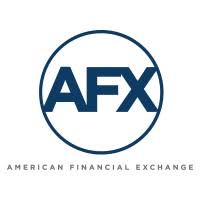Over the past several months, in ways we never could have imagined, our lives and businesses have changed due to the Coronavirus disease, COVID-19. The global pandemic declared in March 2020 by the World Health Organization has wreaked havoc on all lines of businesses, small and large, across the globe. The futures industry is no exception. Our industry is impacted by the state and local mandated quarantines, and the volatile markets resulting from the vast amount of uncertainty. Thanks to swift actions by our regulators, there has been relief provided to some of the regulatory requirements faced by many, if not all, CFTC registrants and NFA Members.
One recent action was taken by the Division of Swap Dealer and Intermediary Oversight (“DSIO”) of the CFTC on April 13, 2020 (CFTC Letter No. 20-15) that came about in response to a joint request from the Futures Industry Association and NIBA on behalf of its member firms that they represent. Many registrants in our industry have applied for loans under the Paycheck Protection Program (“PPP”) administered by the Small Business Administration. The PPP is a component of the Coronavirus Aid, Relief, and Economic Security Act (the “CARES Act”) that allows qualifying businesses to obtain loans of up to $10 million dollars. It is designed to provide a direct incentive for small businesses to keep their employees on the payroll. In the CFTC Letter No. 20-15, the DSIO addresses how FCM and IB registrants can treat the covered loans received under the PPP in meeting their minimum net capital requirements.
The DSIO letter said that it would not recommend that the CFTC take enforcement action against any FCM or IB that adds back to its capital that portion of the loan that is considered the “Forgivable Expense Amount”. For simplicity purposes, the Forgivable Expense Amount is considered the amount of the PPP loan that will be forgiven, which will represent the sum of payroll costs, payment of interest, payment of rent obligations, and covered utility payments, as all defined under the CARES Act, during the eight-week period beginning on the date of the origination of the covered loan.
This relief will be able to be used by FCM and IBs that have received the PPP loan proceeds and have recorded the loan as a liability on its books, as long as they meet these conditions:
- The FCM or IB includes the covered loan as a liability on its balance sheet;
- The FCM or IB creates and maintains documentation to support the amount of the Forgivable Expense Amount being added back to its capital. This would include, but not be limited to, a record of the costs and payments making up the amount and a record of any estimate with the basis of such estimate;
- The amount of the add-back does not exceed the balance sheet covered loan liability. Bottom line is that the amount being added back cannot increase net capital by more than the balance sheet liability for the covered loan;
- The amount being added back to the firm’s capital is reported on line 3070 (Long term debt pursuant to regulation 1.17(c)(4)(vi)) of the Statement of the Computation of the Minimum Capital Requirements of the applicable Form 1-FR-IB or Form 1-FR-FCM along with an explanation on a separate page; and
- If an IB or an FCM is dually registered with the Securities and Exchange Commission (“SEC”) as brokers or dealers, they can continue to file a FOCUS Report in lieu of a Form 1-FR-IB or Form 1- FR-FCM and report the Forgivable Expense Amount on line 3525 (Other (deductions) or allowable credits) as directed by the FINRA.
For illustration purposes, assume your firm received $75,000 from your bank as part of the PPP. The loan proceeds have been deposited into the firm’s bank and therefore, firm’s assets were increased by $75,000 and the firm’s liabilities were increased by the same amount. If the firm spent $25,000 in the weeks following the receipt of the loan on payroll costs, detailed records will need to be maintained supporting these payroll costs and the $25,000 can be ADDED back on line 3070 of the Form 1-FR or line 3525 on the Focus Report when computing the firm’s net capital.
If you have not had an opportunity to obtain a copy and read CFTC Letter No 20-15, we encourage you to do so to ensure you are in full understanding of the requirements. It is expected that registrants and other affected market participants may require additional or different relief in their efforts to comply with the requirements. As a result, any registrant that requires other relief are encouraged to contact the DSIO staff. Their staff will address issues on a case-by-case basis based on the requesting registrant’s particular facts and circumstances.
Contributed by Robert DeMuria, President and Co-Founder of Compliance Supervisors International, Inc., a full service compliance firm serving the futures industry since 1994. Robert is also a member of NIBA’s Advisory Group. Should your firm need assistance with the regulatory reporting for the PPP loan or any other compliance assistance relating to the rules and regulations governing your operations, please feel free to contact Robert at 732-335-5740 or you can e-mail him at [email protected].




